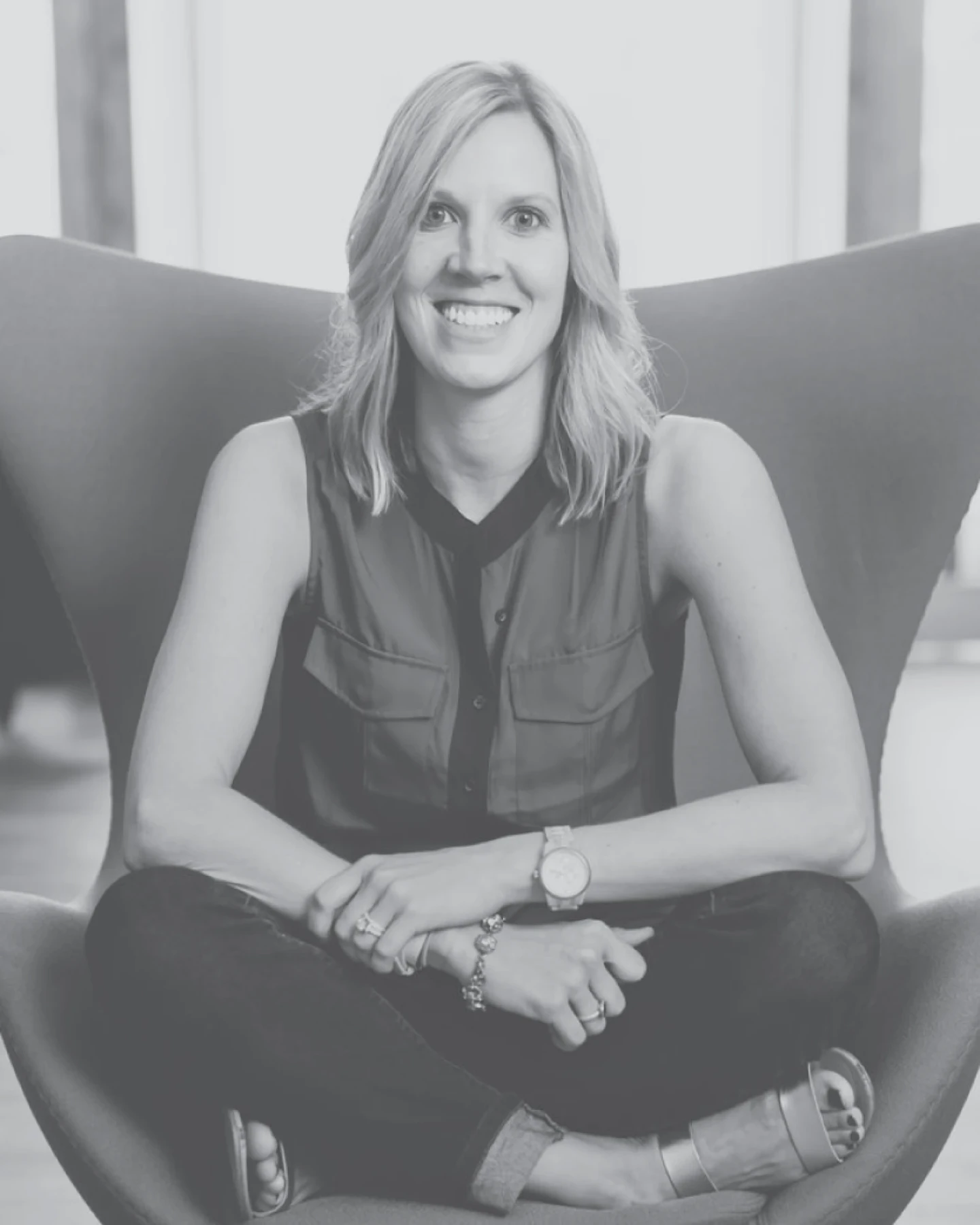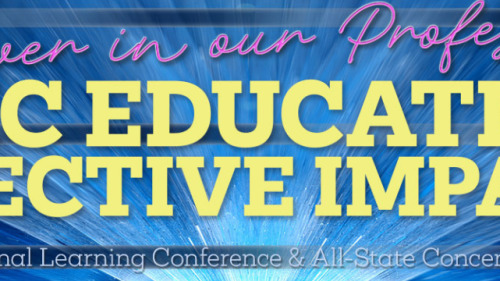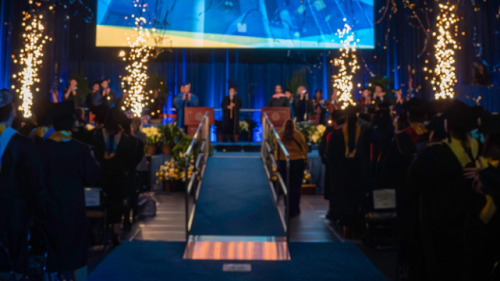Kent State User Experience Design (UXD) Instructor Kelsey Pytlik has an undergraduate degree from Miami University of Ohio and a master’s degree in User Experience Design from Kent State University. After her early career with creative agencies and e-commerce retailers, she became the sole UX designer for luxury furniture retailer Frontgate. She is now the CEO of Gild Collective, which is dedicated to empowering women through inclusion and leadership.
Read on for excerpts from her recent interview, in which she shared career-based insights and recommendations for UXD students.
Tell Us About Gild Collective and Its Mission.
Gild Collective changes individual views and behaviors to shift workplace cultures and break down gender barriers. Through thoughtfully designed leadership workshops and gender inclusion trainings, we’ll close the leadership development gap for women and create an inclusive environment in which diverse talent can thrive.
The organization has changed quite a bit since we founded it in the spring of 2015. We were an e-commerce business developing creative project kits for women to use together for craft nights at home. Early on, we went through a business accelerator and experienced gender bias as the first all-female team to go through it. It was then that we shifted our efforts to working within companies—the women’s initiatives and diversity and inclusion teams—to focus on women’s leadership skills and inclusion training.
What are your days like as CEO?
A lot of my work is behind the scenes in managing daily operations, financials, etc. I also do sales outreach, so I spent a lot of time talking to clients. My co-founder typically leads our curriculum development, but we share efforts across the board, so we’re always working on the content for our next client session, as well. And then we’re traveling to deliver sessions to our clients across the country!
In addition, I’m an adjunct professor at Kent State and a contract UX designer, so I’m working with clients to deliver UX project needs. I try to manage my time by blocking dedicated “deep work” time for UX and Gild Collective work.
Tell us about the projects you worked on for Procter & Gamble, Conagra and Smuckers.
Many of these big names were clients of the agency I worked for when I first came out of my master’s program. Each of these companies has a ton of brands, so I worked on projects for Charmin, Bounty, Dreft, Eukanuba, ReadySetEat, Rotel, Eagle Brands, Smucker’s Foodservice, Folgers … the list goes on! Every project was different, so we were able to try new things and get creative with how we addressed problems for websites or social campaigns.
You have developed website redesigns, mobile apps and Facebook marketing. How is each one of these platforms different to design for? How did the online master’s help to prepare you?
The main difference is the user and the user mindset across different platforms. Even if they’re platforms for the same brand, the user who comes to the website is going to have different needs than the user who stumbles across branded campaigns on social media. Understanding that mindset and designing for the user goal is critical. The master’s program instilled in me the need to constantly ask:
- Who is the user?
- Why is the user here?
- What does s/he need?
- What does success look like?
If you aren’t considering those questions, you are more or less designing blindly!
Tell us about being the sole UX designer at Frontgate.
There had never been a UX designer in the organization, so I spent a lot of time educating others about what my role was and how I fit into the design process. It was a challenge sometimes to insert myself into a process that had previously been run as simple design-to-development—now adding another step on the front end to consider UX design.
I made it a point to be extremely collaborative with our project managers, product merchandisers, designers, copywriters and developers, so we were all working together toward a common goal. I always felt like I had those people to bounce ideas off of and we often started with rapid prototyping sessions. I wouldn’t say that being the only UX designer was a pain point. Often, getting something in front of possible users, to see what they would expect and how they would use it, is more valuable than another expert opinion. This is why user testing is so important!
Was there a course in the master’s program that helped with your professional goals?
I really enjoyed working on my thesis, which was a user research effort on how customers online shop through digital catalogs. The process of pulling together a large-scale study, recruiting participants, running sessions and developing a report was a great experience that allowed me to create content that was valuable to the UX (and e-commerce) community.
What skills were you immediately able to use in your career?
Everything! I was working through my master’s in a user research lab, so certainly anything related to user research, developing test plans, moderating sessions, writing reports and making recommendations and bringing them to life in the wireframe form was immediately applicable. Other things that I didn’t use right away were more centered on information architecture, but I put all of that to use in my next role.
What emerging trends are you keeping an eye on?
I’ve been working on a few mobile apps recently, so I’ve been very aware of how to take advantage of a device’s default functionality versus recreating (and possibly confusing) the wheel. If you’re going to share something from an app, why not use the native sharing functionality rather than trying to create your own process for doing so? This is very top-of-mind for me at the moment, but likely not a true emerging trend.
What advice do you have for students hoping to parlay their online Master’s in UXD into positions at large corporations?
Consider whether you want to have the experience of working at an agency, where you’ll have exposure to a lot of different brands, or if you’re more interested in working on an in-house team on one brand (or a handful of brands). After doing both, I think there are benefits to both. Even now, as a contract UX designer, I work with an agency as an extra set of hands and they’ll put me on different brands or types of projects, but I also work directly with product teams at an organization as an extension of their in-house team. Both are great for different reasons.
I’m glad I had the agency experience first, coming right out of my master’s program, because it allowed me to put my newly developed skills into practice in a variety of different ways. Then, once I moved to an in-house team, I had really perfected certain pieces of my work that I tended to use most often for that organization. However, I’m sure if I had gone in the reverse order, there would have been benefits to that, as well.
What advice do you have for current or prospective online Master’s in UXD students?
Even if there is a course or an assignment that doesn’t feel applicable to exactly the area of UX that you’re interested in or where you think you’ll specialize, it’s still going to keep popping back up in your life as a UX designer. If you fall more on the design side than the research side, that’s fine, but you still need to understand user needs to design more effectively. And if you want to do more research, you still need to know how to bring your recommendations to life. All elements of UX are intertwined, so don’t ignore one in favor of another. It will all come together in the end!
Inspire Your Uxd Career at Kent State.
In Kent State’s online Master’s in User Experience Design program, you’ll learn the process, methodology and reasoning behind UX tools and techniques—and graduate with a degree and portfolio that prove it. Put your versatility, experience and in-depth knowledge into action every day. Become the seasoned UXD expert who can unravel any design challenge.





